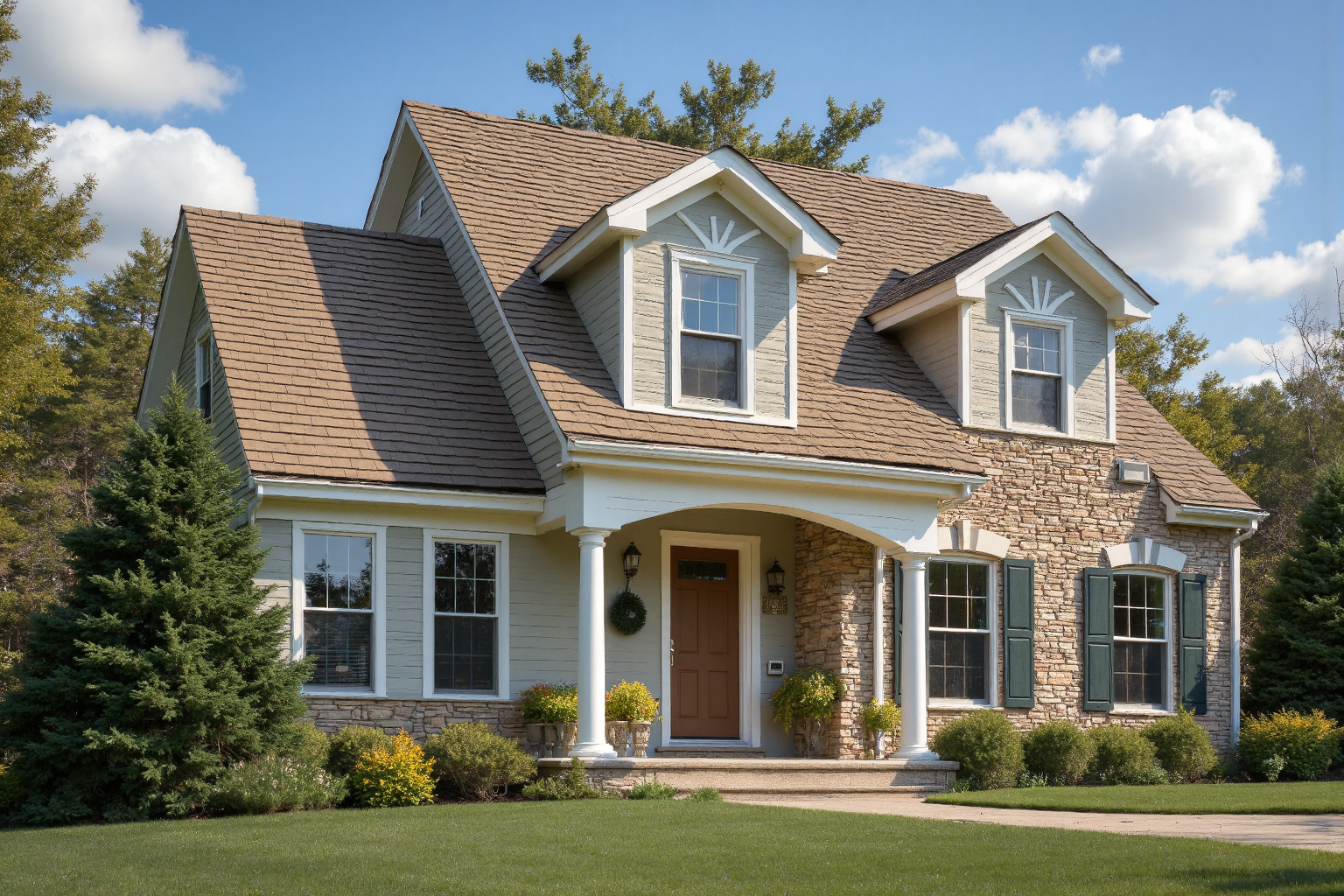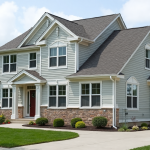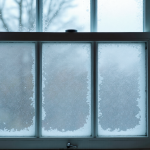Exploring the Latest Advancements in Composite Siding Materials
The Future of Home Protection: Exploring Advancements in Composite Siding
Protecting your home from the elements is a paramount concern for every homeowner. With the increasing frequency and intensity of extreme weather events, from hurricanes and hailstorms to extreme temperature fluctuations, the exterior of your home faces unprecedented challenges. Coupled with rising energy costs, selecting the right siding material is no longer just an aesthetic choice; it’s a crucial investment in protecting your property and ensuring long-term cost savings. This article delves into the latest advancements in composite siding, a category of building materials engineered to offer superior protection, durability, and energy efficiency compared to traditional options.
The exterior of your home is its first line of defense against the elements. Traditional siding materials like wood, while aesthetically pleasing, often fall short in terms of durability and require extensive maintenance to combat weathering, pest infestations, and potential fire hazards. Composite siding materials, on the other hand, are engineered to withstand these challenges, providing homeowners with a resilient and low-maintenance solution. From fiber cement and engineered wood to advanced vinyl and polymer composites, these innovative materials offer a range of benefits, including enhanced weather resistance, pest control, fire safety, and improved insulation, ultimately contributing to a more sustainable and resilient home.
The rising cost of energy is another critical factor influencing building material choices. Composite siding contributes to energy efficiency by providing superior insulation, reducing the transfer of heat between the exterior and interior of your home. This translates to lower heating and cooling costs, resulting in significant long-term savings and a smaller carbon footprint. For environmentally conscious homeowners, many composite siding options incorporate recycled materials and are manufactured with sustainable practices, further aligning with eco-friendly building principles.
Advancements in manufacturing processes have resulted in composite siding products with enhanced performance characteristics and a wider range of aesthetic options. Modern composite siding mimics the look of natural wood with remarkable accuracy, offering homeowners the curb appeal of traditional materials without the associated maintenance burdens. Furthermore, composite siding is available in a variety of colors, textures, and profiles, allowing homeowners to customize their exterior design and achieve their desired aesthetic vision. Whether you prefer the classic look of cedar shingles or the sleek lines of modern lap siding, composite materials offer versatile design possibilities to complement any architectural style. From a sustainability perspective, composite siding presents a compelling alternative to traditional materials. Its longevity and minimal maintenance requirements reduce the need for frequent replacements, minimizing the consumption of resources and the generation of construction waste. Moreover, the enhanced energy efficiency of composite siding contributes to lower energy consumption, reducing your home’s environmental impact. By choosing composite siding, homeowners are making a smart investment in their property and contributing to a more sustainable future.
A New Era of Siding: Innovations in Composite Materials
Composite siding has ushered in a transformative era for the exterior cladding industry, offering a significant leap forward from traditional materials like wood. This evolution stems from the inherent limitations of wood, which is susceptible to moisture damage, pest infestations, and fire hazards. Composite materials, engineered for superior performance, address these vulnerabilities head-on, providing exceptional resistance to these common threats. This resilience translates to extended lifespan, reduced maintenance costs, and enhanced peace of mind for homeowners.
For example, in regions prone to heavy rainfall or high humidity, composite siding maintains its structural integrity and aesthetic appeal, unlike wood which can warp, rot, or become a breeding ground for mold and mildew. Fiber cement siding, a prominent player in the composite market, exemplifies this advancement. Composed of a sophisticated blend of cement, sand, and cellulose fibers, it delivers exceptional durability and minimal upkeep. This composition creates a robust material that withstands the harshest weather conditions, resists impact damage, and provides inherent fire protection.
Furthermore, fiber cement siding offers design versatility, mimicking the look of wood, stucco, or even masonry, allowing homeowners to achieve their desired aesthetic without compromising performance. A study by the Building Research Council at the University of Illinois found that fiber cement siding can last up to 50 years with proper maintenance, significantly outperforming traditional wood siding. Engineered wood siding presents another compelling option, bridging the gap between the natural appeal of wood and the enhanced durability of composites.
By combining wood fibers with resins and adhesives, manufacturers create a product that captures the aesthetic warmth of wood while bolstering its resistance to moisture, insects, and decay. This makes engineered wood a suitable choice for homeowners who desire the traditional look of wood but seek the longevity and low-maintenance benefits of composite materials. Moreover, some engineered wood products incorporate recycled wood content, contributing to sustainable building practices. Vinyl siding, a long-standing contender in the exterior cladding market, has also undergone significant improvements.
Known for its affordability and ease of installation, modern vinyl siding formulations boast enhanced durability, colorfastness, and impact resistance. Technological advancements in pigment technology have led to richer, more vibrant colors that resist fading from UV exposure, ensuring long-lasting curb appeal. Furthermore, some vinyl siding products now incorporate insulating properties, contributing to improved energy efficiency by reducing heat transfer through the exterior walls. This can translate to lower energy bills and a smaller carbon footprint for environmentally conscious homeowners.
The increasing focus on sustainable building practices has further propelled the adoption of composite siding. Many composite materials are manufactured using recycled content, diverting waste from landfills and reducing the demand for virgin resources. Additionally, the durability and longevity of composite siding minimize the need for frequent replacements, further contributing to resource conservation. The energy efficiency benefits of some composite siding options, such as insulated vinyl siding, also align with sustainability goals by reducing energy consumption and greenhouse gas emissions. As the building industry continues to prioritize environmentally responsible practices, composite siding is poised to play a key role in shaping the future of sustainable home construction.
Evolution in Manufacturing and Installation
The evolution of composite siding manufacturing and installation is revolutionizing the home improvement landscape. Advanced manufacturing techniques, utilizing cutting-edge technology, ensure tighter quality control and enhanced performance characteristics, directly addressing homeowner concerns about durability and weather resistance. For instance, some manufacturers now employ 3D printing to create intricate siding profiles with exceptional precision, offering a new level of design flexibility for exterior applications. This precision also translates to improved weather-tightness, minimizing vulnerability to moisture damage, a critical factor in home protection.
Furthermore, the integration of sustainable practices in manufacturing processes, such as using recycled materials and reducing waste, aligns with the growing demand for eco-friendly building materials. These advancements not only contribute to a more sustainable building process but also enhance the long-term value of the home. Innovative installation systems are also transforming the siding industry. Pre-fabricated panels and clip systems allow for quicker and more efficient installation, significantly reducing labor costs and project timelines, key considerations in any home improvement project.
This streamlined installation process minimizes disruption to homeowners, making the transition to composite siding a smoother and more convenient experience. The use of advanced installation techniques also ensures a more precise and secure fit, enhancing weather resistance and overall structural integrity. Many composite siding options now come pre-finished with a wide array of colors and textures, eliminating the need for painting and further reducing maintenance requirements. This pre-finishing process offers both aesthetic and practical benefits, contributing to a beautiful and long-lasting exterior design while minimizing the long-term costs and environmental impact associated with traditional painting methods.
From a sustainability perspective, the durability and longevity of composite siding, combined with its low-maintenance requirements, contribute to reduced resource consumption and waste generation over the lifespan of the home. The enhanced energy efficiency of composite siding, due to its insulating properties, also contributes to lower energy bills and a reduced carbon footprint, making it an environmentally responsible choice for homeowners concerned about sustainability. The combination of advanced manufacturing, efficient installation, and sustainable materials makes composite siding a smart investment for homeowners seeking both enhanced home protection and long-term value.
Comparing Composite Siding Materials: A Comprehensive Guide
Navigating the diverse landscape of composite siding materials requires careful consideration of various factors, including climate, budget, aesthetic preferences, and long-term performance goals. Understanding the nuances of each material is crucial for homeowners seeking to make informed decisions that enhance both the beauty and resilience of their homes. Fiber cement siding, composed of a blend of cement, sand, and cellulose fibers, stands out for its exceptional durability and fire resistance. While generally more expensive than vinyl, its robust composition makes it impervious to rot, insects, and even extreme temperature fluctuations, making it a worthwhile investment for homeowners in regions prone to harsh weather conditions.
Independent studies have shown fiber cement siding to withstand wind speeds exceeding 130 mph, offering superior protection against storm damage. Furthermore, its inherent fire-resistant properties contribute to enhanced home safety and potentially lower insurance premiums. Engineered wood siding offers the allure of natural wood grain with enhanced performance characteristics. Manufactured from wood fibers, resins, and binders, it provides a visually appealing alternative to traditional wood while offering greater resistance to moisture and pests. However, engineered wood siding typically requires more maintenance than fiber cement, including periodic repainting or staining to preserve its appearance and protect it from the elements.
Homeowners should weigh the aesthetic benefits against the increased maintenance demands when considering this option. Proper installation is also critical for maximizing the lifespan and performance of engineered wood siding, as improper sealing can lead to moisture infiltration and premature deterioration. Vinyl siding remains a popular choice for its cost-effectiveness and ease of installation. Technological advancements have led to improved vinyl formulations that offer enhanced color retention and impact resistance compared to earlier generations. While suitable for regions with moderate climates, vinyl siding may become brittle in extreme cold and can warp or fade in intense sunlight.
Homeowners in areas with significant temperature fluctuations or prolonged sun exposure should carefully evaluate the suitability of vinyl siding for their specific climate. Beyond the core materials, exploring sustainable options within each category is essential for environmentally conscious homeowners. For instance, some fiber cement manufacturers incorporate recycled content into their products, reducing their environmental footprint. Similarly, engineered wood siding can contribute to sustainable building practices by utilizing wood fibers sourced from responsibly managed forests. When selecting composite siding, inquiring about the manufacturer’s sustainability practices and seeking certifications like Forest Stewardship Council (FSC) certification for wood-based products can help homeowners make environmentally responsible choices.
Finally, consulting with experienced siding installers is paramount for ensuring proper installation and maximizing the long-term performance of any composite siding material. Proper installation techniques, including adequate ventilation and flashing, are essential for preventing moisture damage and ensuring the siding’s longevity. A qualified installer can assess the specific needs of a home and recommend the most suitable materials and installation methods for optimal performance and aesthetic appeal. By considering these factors, homeowners can confidently choose the composite siding that best aligns with their needs, budget, and long-term vision for their home.
Making the Smart Choice: Long-Term Value and Sustainability of Composite Siding
Investing in composite siding offers significant long-term value and provides homeowners with peace of mind knowing their homes are well-protected. This stems from the material’s inherent resilience against a multitude of threats, from extreme weather events and pest infestations to the devastating impact of fire. This enhanced protection translates to a safer, more resilient home, capable of withstanding the tests of time and the increasing volatility of climate patterns. For instance, in regions prone to hurricanes, composite siding’s resistance to wind and impact damage can be a crucial factor in preserving structural integrity.
Furthermore, its resistance to moisture prevents rot and decay, common issues with traditional wood siding, thus reducing long-term maintenance costs and preserving the home’s value. The durability of composite siding significantly reduces lifecycle costs compared to traditional materials. While the initial investment might be higher, the reduced need for repairs, repainting, and replacement translates to substantial savings over time. Homeowners can further enhance their return on investment by selecting energy-efficient composite siding options that contribute to lower heating and cooling costs.
These “insulated” siding systems incorporate a layer of rigid foam insulation, effectively reducing thermal bridging and improving the overall energy performance of the building envelope. This not only lowers utility bills but also contributes to a smaller carbon footprint, aligning with the growing emphasis on sustainable building practices. The environmental benefits of many composite siding options further enhance their appeal. Many manufacturers utilize recycled materials in the production process, diverting waste from landfills and minimizing the environmental impact of manufacturing.
For example, fiber cement siding often incorporates recycled wood fiber, while some composite products utilize recycled plastic content. This commitment to sustainability aligns with the increasing consumer demand for eco-conscious building materials and contributes to a greener future for the construction industry. Moreover, the longevity of composite siding reduces the need for frequent replacements, minimizing the consumption of resources and the associated environmental impact. Beyond its practical benefits, composite siding offers a wide array of design options to enhance a home’s curb appeal.
From the classic look of wood grain to the sleek lines of modern designs, homeowners can choose a style that complements their architectural preferences and enhances their neighborhood’s aesthetic. The versatility of composite siding allows for a variety of colors, textures, and profiles, empowering homeowners to personalize their exteriors and create a unique visual statement. This design flexibility makes composite siding an attractive option for both new construction and renovation projects, offering a valuable tool for architects, builders, and homeowners alike.
When considering composite siding, homeowners should consult resources like the National Association of Home Builders (NAHB) and local contractors experienced in working with these materials. The NAHB provides valuable information on building codes, best practices, and product certifications, while local contractors can offer expert advice on selecting the right type of composite siding for specific climate conditions and design requirements. Engaging with qualified professionals ensures proper installation, maximizing the performance and longevity of the siding and ensuring a smooth, successful home improvement project. By carefully considering these factors, homeowners can make informed decisions that enhance their homes’ beauty, durability, and value for years to come.


